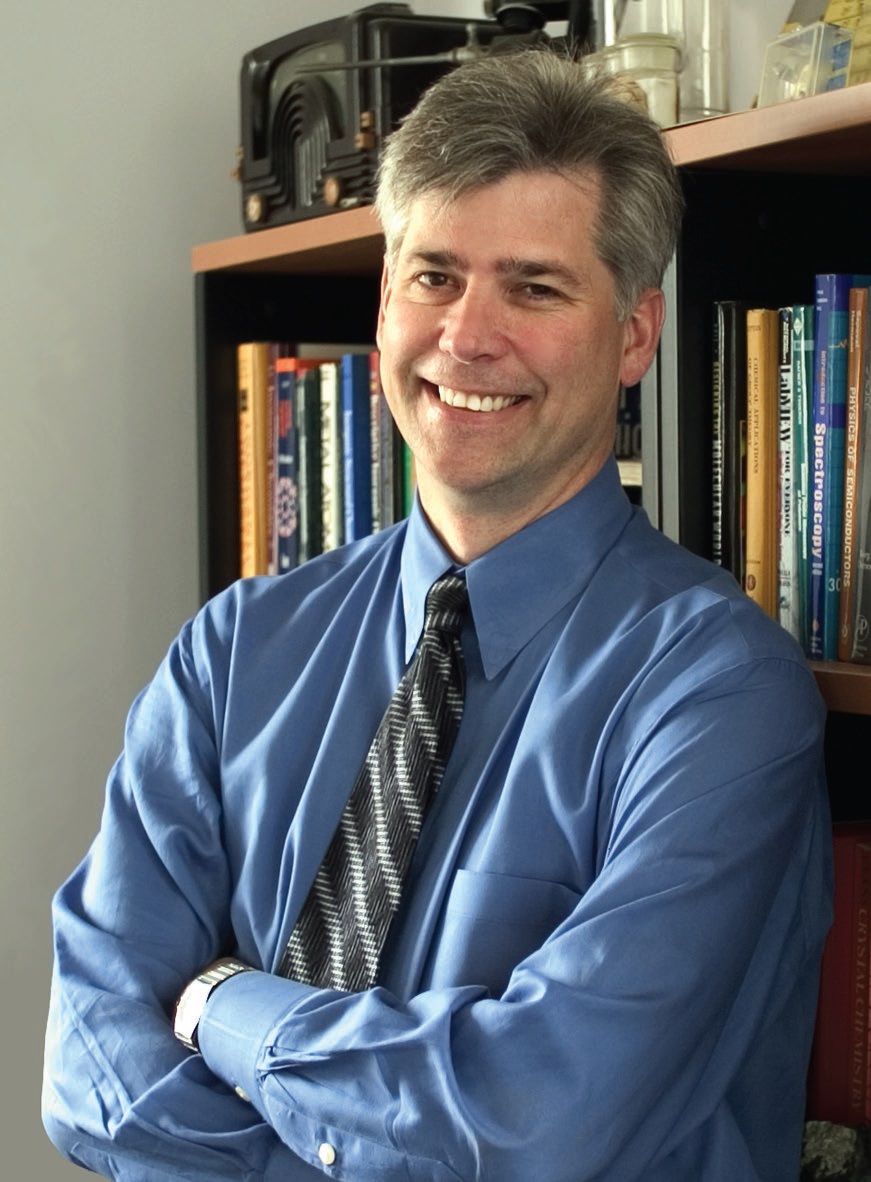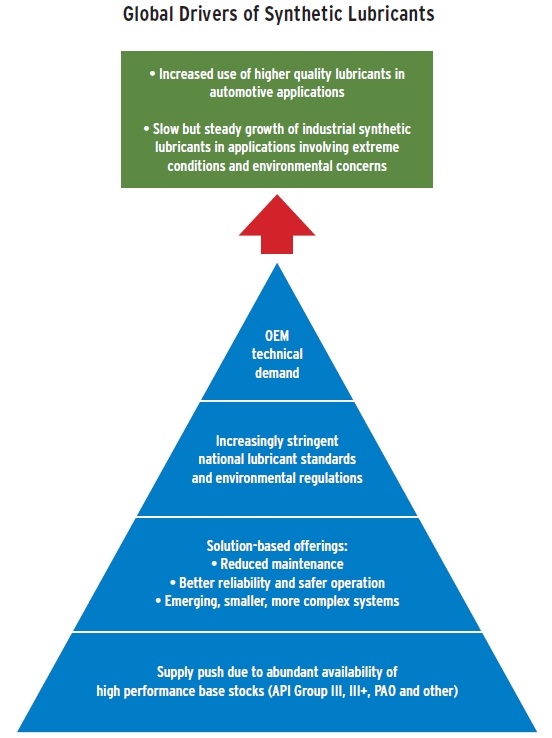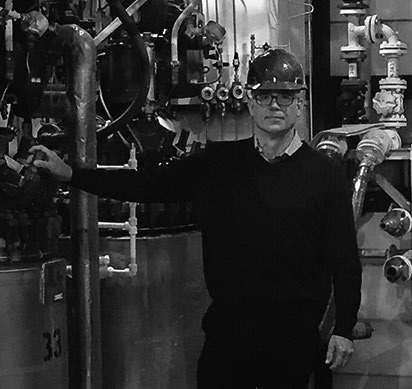20 Minutes With Lawrence Sita
Rachel Fowler, Managing Editor | TLT 20 Minutes December 2017
This professor turned CEO followed a lean start-up strategy to successfully launch a niche-market polyolefin company.
LAWRENCE SITA - The Quick File
Lawrence Sita is a professor of chemistry at the University of Maryland in College Park, Md., and the founder and acting CEO of the start-up company Precision Polyolefins, LLC (PPL). Sita is a native of Northern California (Sacramento) but spent his junior high and high school years in Oklahoma City, Okla., where his father switched careers, changing from a nuclear rocket engineer for the space program to an entrepreneur owning the largest fiberglass manufacturing firm in the city. From this early encounter with the chemical industry, Sita obtained his bachelor’s of science degree in chemistry from Carnegie Mellon University in 1981 and then his doctorate in chemistry in 1985 from the Massachusetts Institute of Technology (MIT) under the mentorship of professor Satoru Masamune.
Sita then spent one year as a postdoctoral associate at MIT with professor Richard Schrock, a 2005 Nobel Laureate in chemistry, before taking his first academic position at Carnegie Mellon University as an assistant professor of chemistry. In 1990 Sita relocated his research program to the California Institute of Technology where he held the position of senior research associate under the supervision of professor Robert H. Grubbs, one of the other 2005 Nobel Laureates in chemistry.
In 1994 Sita moved to the University of Chicago as an assistant professor of chemistry and then to the University of Maryland in 1998, first as an associate professor of chemistry before being promoted to his current position in 2000. Sita’s academic research program ranges from organometallic to polymer chemistry/material science to nanoscience and nanotechnology involving the self-assembly of block copolymers and amphiphiles and new nanofabrication methods.
Sita has published more than 220 scientific papers and currently holds 18 issued patents as inventor. After serving as the associate dean of faculty, research and diversity for the College of Chemical and Life Sciences for the period of 2005 to 2006, Sita founded PPL in 2008 after receiving an exclusive license from the university for the entire portfolio of patents. In his role as acting CEO of PPL, Sita has led the company through rapid growth funded by Small Business Innovation Research (SBIR) Phase I, IB and II grants from the National Science Foundation (NSF), a Small Business Voucher (SBV) from the Department of Energy and several contracts and sponsored research agreements with leading global companies.

Lawrence Sita
TLT: What were the major challenges you faced in starting a chemical company from scratch?
Sita: This is easy—money, time and experience but not necessarily in this order. I discovered that starting a company is easy; the official process simply involves filing the necessary paperwork and fees. Having a successful start-up company that exists beyond being listed on paper, however, is exceedingly difficult. For a chemical start-up company, I feel that the burden is somewhat greater in terms of raising initial capital since this industry is not viewed by venture capitalists as being as attractive as, say, bioscience and information technologies. Accordingly, from the start I took the position that, in order to bring in the necessary level of funding, we first needed to validate the capabilities of our technology and products beyond the patent descriptions and laboratory scale. This is where Small Business Innovation Research (SBIR) grants from the National Science Foundation (NSF) played an early critical role and, in particular, the helpful advice we obtained from our NSF program manager, Dr. Prakash Balan. Outlining a lean start-up strategy and sticking with it was, and continues to be, very important for our success.
PPL has managed to continue to grow and stabilize by strategically leveraging resources at each critical phase of our technology and product development. I believe the success of this approach can be measured by the fact that only five years after commencing with physical operations, PPL has been able to demonstrate its technology on the pilot-plant scale to produce 100-kilogram single-reactor batch quantities of five different products that are now at various stages of initial customer evaluation and commercialization.
Naturally, none of this success would be possible without having the right people on board at PPL who share the same passion and motivation to succeed. Here I can give a shout-out to Dr. Jonathan Reeds, who initially joined PPL as our director of research and innovation and who now is vice president for manufacturing. We have also benefited from partnerships with global companies that see the potential value in PPL’s technology and products over a broader spectrum of markets and applications that are synergistic with our own commercialization goals. In this way, PPL has been able to engage in sponsored research in aligned areas that provides an important revenue stream and creates additional support for the development of our technology at both the laboratory and pilot-plant scale. In terms of the latter, I can say that we also have been very fortunate to have engaged, at a very early stage, an excellent toll manufacturing firm that had the collective know-how and equipment necessary to achieve success with the scale-up version of our processes—not just once but every time. Although a scale-up failure might be inevitable in the long run, PPL has been able to build more momentum from each of these early-stage accomplishments.
Finally, time is always a challenging factor that never seems to work in your favor. For PPL, achieving milestones, whether internally set or as established by an agreement, is always a function of time, people and the maturity and potential of our technology and products. With this I believe PPL has done an excellent job based on not only the increasing list of innovation awards that are being presented to us at trade shows and conferences but also by the increasing level of positive attention PPL is receiving from potential customers and partnering companies within different market segments of the chemical industry.
On a personal level, time is always the enemy, and the day never gets longer. In addition to currently serving as the acting CEO and CSO of PPL, I still have my academic title and position at the University of Maryland in College Park, Md., where I teach and manage a separate federally funded research program—oh, and I also am a father and husband to a wonderful and very supportive family. I can say that the latter is not only critical for achieving success, but it makes the long days and nights spent all rewarding in the end.
TLT: How does PPL’s catalyst technology differ from existing technologies?
Sita: PPL’s core technology is based on a series of breakthroughs and inventions that my academic research program at the University of Maryland achieved during the past 15 years through continuous support provided by the NSF. More specifically, these advances led to the development of transition-metal complexes that can serve as catalysts (or more accurately, initiators) for the “living” coordination polymerization (LCP) of ethylene, propylene and longer-chain linear α-olefins (LAOs) to produce structurally well-defined and homogenous polyolefins of controllable molecular weights and extremely narrow molecular weight distributions—otherwise known as polydispersity. Importantly, when applied to the production of synthetic base stock oils, PPL’s polyalphaolefin (PAO) products, which we designate with the
nPAO trademark as a separate class under the general Group IV category of synthetic PAOs, have a polydispersity index (PDI) of <1.2.
In contrast, the current state of the art for Group IV PAO base stock oils is “metallocene” technology, which produces
mPAO base stock oils that typically have a PDI of >1.8. This large difference in PDI values between mPAOs and nPAOs manifests as a set of competitively advantageous and technologically desirable properties of the latter over the former. When coupled to PPL’s ability to tightly program in different targeted number-average molecular weight values (M
n), and hence, different targeted kinematic viscosities, as well as some other scientific, technical and process advantages, we believe that our Group IV nPAO base stock oils represent a new opportunity for the development and commercialization of the next generation of fully formulated synthetic lubricants (
see Figure 1).
 Figure 1. Factors behind the growth in synthetics. (Figure courtesy of Kline.)
TLT: How does PPL, a university spinout company, plan on breaking into a market that is dominated by large multinational chemical companies?
Sita:
Figure 1. Factors behind the growth in synthetics. (Figure courtesy of Kline.)
TLT: How does PPL, a university spinout company, plan on breaking into a market that is dominated by large multinational chemical companies?
Sita: I grew up at a time when many consumer markets, such as for beer, were dominated by large national and multinational companies in which the sustainable business model required large product volumes for mass customer consumption. Then along came the concept of craft beers that are uniquely produced by a microbrewery on a much smaller scale and for a more narrowly defined target audience. There is now no doubt that this alternative business model involving lower volumes for more custom-tailored products works, and it has been successfully emulated across many other markets for a variety of end-applications.
In this respect, we view PPL’s products as the craft beer of the polyolefins industry. To our knowledge, PPL is the first start-up company that has a proven and robust technology that can deliver smaller volumes of tailored polyolefins that can deliver significant and competitive performance enhancement in finished goods that have previously been dominated by large global companies. We believe that PPL has the further advantage of not having to be as backward- and forward-integrated as these global companies are, and our identified sweet spot for annual production volumes is on the order of only one to five kilotons per product, which is substantially smaller than the commercial volumes that most large global producers of polyolefins are typically interested in. In keeping with the craft beer analogy, PPL also has the key advantage of greater flexibility and our technology is allowing us to quickly sample and secure new intellectual property for an entirely new landscape of polyolefin materials that have not been previously accessible.
TLT: Bringing a new lubricant to market can be extremely expensive and can take many years. How do you expect to overcome this challenge?
Sita: There are only a few categories of base stock oils that are available for providing the basis upon which a new lubricant is formulated. PPL has the distinct advantage that its technology provides access to an entirely new category of Group IV PAOs, and for the time being we further control access to our
nPAO base stock oils and, by extension, any new line of fully formulated synthetic lubricants that are based on this unique class of PAOs. PPL also now has the advantage of time on our side. More specifically, the past 15 years of scientific research not only delivered the advances upon which PPL technology is based, it established an incredibly rich foundation of know-how that has not been disseminated publically. In fact, I greatly credit the latter for our ability to quickly translate from the laboratory to various scale-up milestones within a remarkably short time. Knowing that this head start is key, PPL is continuing along an aggressive scale-up timeline for its nPAO products. Regarding cost, partnerships are always key—but so are customers. We believe that there will always be a demand and space for new high-performance lubricants, and in this regard, PPL’s mission is to add to the pie rather than cutting from a piece already taken.
 Lawrence Sita working hard to make precision polyolefins for PPL.
TLT: Validation on the pilot-scale is a major hurdle for new technologies. How difficult was it to achieve this milestone and what was the significance of this step in the development of your technology?
Sita:
Lawrence Sita working hard to make precision polyolefins for PPL.
TLT: Validation on the pilot-scale is a major hurdle for new technologies. How difficult was it to achieve this milestone and what was the significance of this step in the development of your technology?
Sita: Wow—this question really says it all. I founded PPL on the belief that most of the scientific hurdles for PPL’s technology had largely been addressed, recognizing at the same time, however, that continued improvements to this core technology would always be needed or desirable for achieving commercial viability for the products. With this in mind, I viewed the future success of PPL as being completely dependent upon our success in moving from the laboratory to the pilot scale, and fortunately early funding provided by the NSF SBIR program through Phase I, IB and II grants allowed us to focus on this major challenge.
On the other hand, no one forgets a failure, and there are admittedly some things related to our technology that are unforgiving and one must simply get right. So although internally for me it was perhaps much more stressful than the arrival of my two children, outwardly, it was essential for me to project that all would be fine. In the end, we worked with an excellent group of professionals associated with a toll manufacturing firm who also worked with us to accommodate the specific needs of our technology for implementation with their equipment. I also credit the robustness of our technology that made it more forgiving when we need to outsource for reaction and bomb calorimetry in order to develop a safe scalable process. Having now been a part of the first pilot-plant run of our technology—which was successful—I can say that the decision to found PPL was a good one and that nPAOs now do exist in quantities that can have meaningful and near-term impact on the future of advanced performance lubricants.
You can reach Lawrence Sita at lsita@precisionpolyolefins.com.